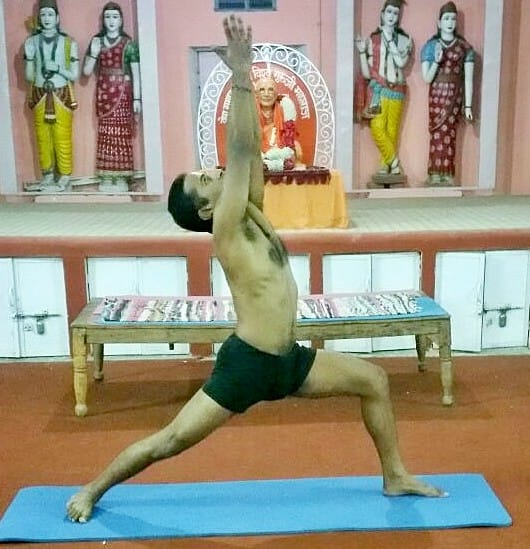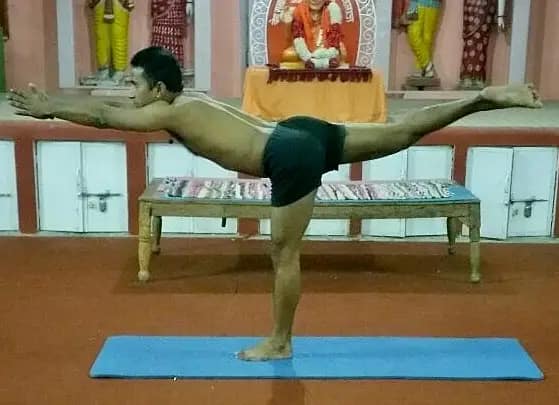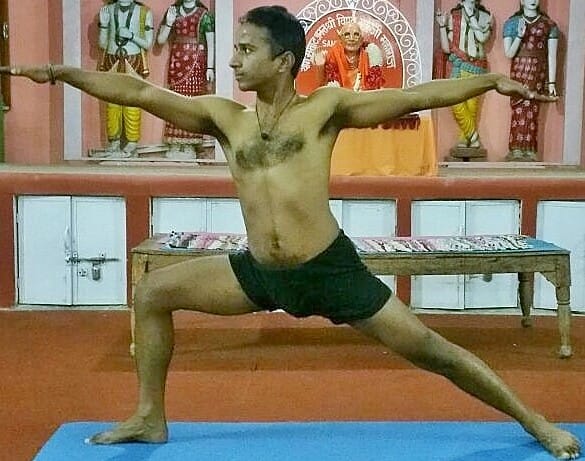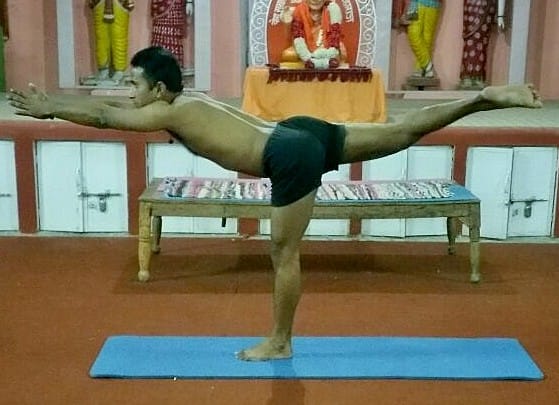Virabhadrasana
Table of Contents
History of Virabhadrasana
Virabhadrasana is one of the most influential asanas, mainly in Astanga Yoga.
The Warrior pose, also known as Veerbhadrasana, is named after Veerabhadra, a great warrior who was an incarnation of Adiyogi Shiva.
There is a fascinating story about Veerbhadra, who arose from the ground. King Daksha had a Yagya (fire ritual), but he did not invite his daughter Parwati and her husband, Shiva, to it.
Parwati became so humiliated that she barged into the venue and burned herself with the fire as she became sati (dead).
As Shiva heard about his becoming insane, he plucked a strand of his hair and slammed it to the ground.
Now Veerbhadra came up, and Shiva initiated him to destroy Daksha and the guests there to join the Yagya.
Veerbhadra took revenge, and in Yogic practices, his name became popular as the Warrior pose.
Types of Warrior Pose
Virabhadrasana series includes Warrior poses 1, 2, and 3. Warrior Pose 1 is considered a beginner pose, Warrior Pose 2 is a meditative pose, and Warrior Pose 3 is mainly practised during a yoga TTC and yoga retreats in the Intermediate yoga series.
-
- Warrior pose 1

Warrior 1 is an excellent posture for beginners to attain balance, strength, and coordination between body parts.
Virabhadrasana is primarily practiced in the Sun Salutation series and Vinyasa flow. It is a standing pose based on proper alignment. In this posture, proper leg movement, body parts adjustment, and lower limb rotation are involved.
How to do Warrior 1 (Veerabhadrasana 1)
-
- To practice Virabhadrasana step by step, stand up in the middle of your mat in Samsthiti (a neutral position). Align your shoulders and relax your body.
-
- Please place your left foot approximately 3-4 feet apart from your body. Move your left foot at a 90-degree angle parallel to the shoulders.
-
- Now, move your right foot inwards at a 45-degree angle. It will help you to lock the lower body.
-
- Bend the right knee and lock the left knee to keep the left leg straightened.
-
- Move your trunk to the right side and lift your hands at a 90-degree angle.
-
- Lift the head and gaze at the third eye channel. Hold the posture for 10-20 seconds.
How to do Warrior 2 (Virabhadrasana 2) in Yoga
-
- Stand up in the middle of the mat in Samsthiti. Align the shoulders and relax the body.
-
- Place your left foot nearly 3-4 feet apart from your body. Move the left foot at a 90-degree angle parallel to the shoulders.
-
- Move the right foot inwards at a 45-degree angle to lock the lower body.
-
- Start to bend the right knee and shift your body weight to this side. Keep the left knee straight.
-
- Now, move the trunk in the right direction after extending the arms parallel to the shoulder level.
-
- Bring all the attention to the right-hand fingers. It is highly effective in improving concentration levels.
How to do Warrior 3 (Virabhadrasana 3) in Yoga
-
- Stand up on your mat and hold Samsthiti. Be straight and align the body properly.
-
- Place your left foot on top, approximately 2 to 3 feet in front of you. Please shift all the body weight to the left side.
-
- Please bring all the balance on the alternate side and maintain your coordination between the legs.
-
- As you shift all your body weight to the right leg, try to lift the left leg at a 45-degree angle.
-
- Pull the hands on the front perpendicular to the shoulders and palms facing each other.
-
- Drishti, or gazing, will be directed at the third eye channel. It is fantastic for opening the third eye chakra.
Benefits of Virabhadrasana
Baddha Virabhadrasana is an excellent yoga pose that helps bring the body and mind together for improved results. The main benefits of the warrior pose are as follows:
-
- To strengthen the legs, one should practise the Warrior pose regularly.
- It is very effective in boosting endurance in the body’s system.
- The warrior pose is excellent for improving concentration.
- It is highly recommended for individuals experiencing muscle cramps and weakness.
- Veerbhadrasana is very effective in increasing blood circulation.
- Yoga for beginners should be practiced to improve the body’s balance.
- Warrior pose is excellent for awakening Manipur chakra and significantly impacts the heart chakra.
- People who want to practice advanced poses, such as Astavakrasana and Chaturanga Dandasana, may frequently attempt Warrior poses.
Precautions for Virbhadrasana
-
- It should not be attempted if the patient has high blood pressure.
-
- People who have knee injuries should avoid practising it.
-
- In case of heart injuries, it is advisable not to practise Virabhadrasana vigorously.
-
- If someone has neck problems, they should try to avoid them.
-
- Women who are pregnant should practise it after consulting their yoga teachers.
-
- It is highly advisable not to attempt this asana if you have a history of migraines or headaches.
Tags:




